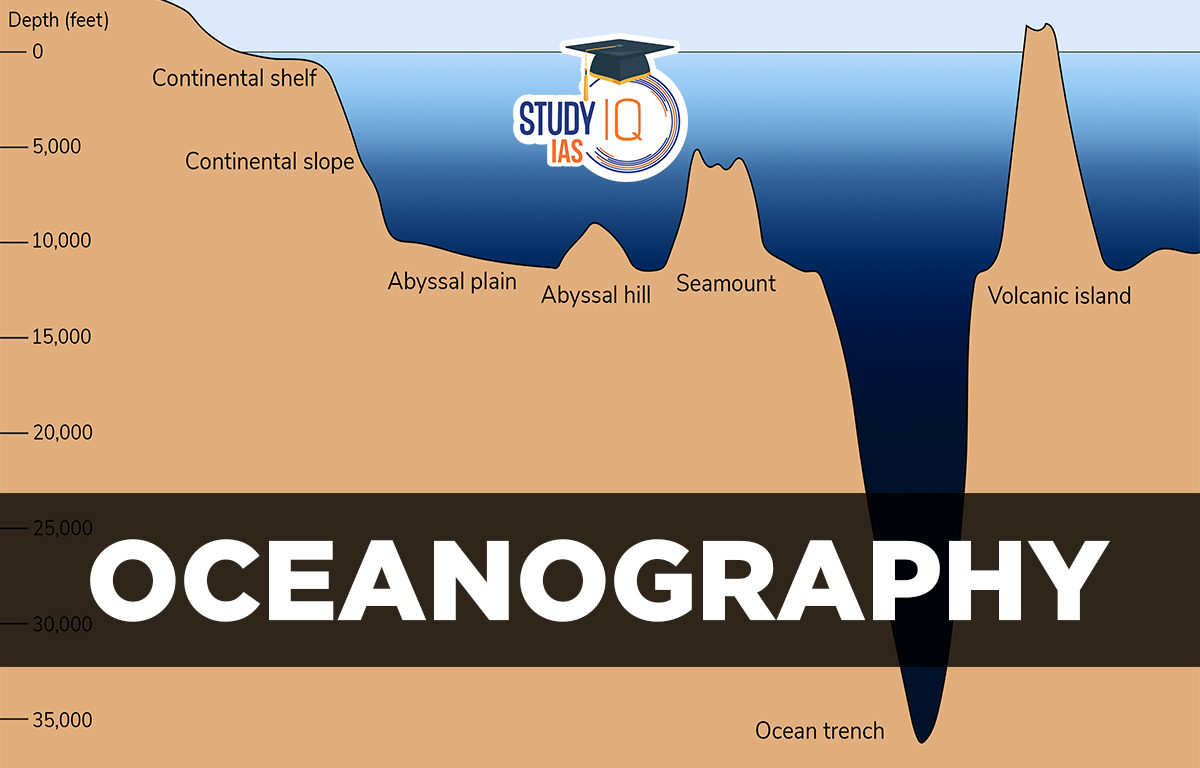Table of Contents
Oceanography is the study of the ocean’s physical, chemical, and biological features, including its history, current state, and future. With climate change and pollution threatening the ocean, the work of oceanographers is more important than ever.
An important area of oceanography is biological oceanography, which studies ocean plants and animals and how they interact with their environment. This research helps policymakers make better decisions about ocean health. For example, fishermen with the Northwest Atlantic Marine Alliance are working with oceanographers to see how pollution affects fish and consumer health, pushing for stricter pollution controls. Oceanographers explore many topics. Some look at how melting sea ice impacts whale migration, while others, like National Geographic Explorer Gabrielle Corradino, study how ocean changes affect tiny phytoplankton and the fish that eat them. Her research included filtering seawater in the Gulf of Mexico to study these vital organisms.
Oceanography also covers geological oceanography, which examines the seafloor’s formation and changes over time. Researchers use GPS technology to map underwater features, helping predict earthquakes and tsunamis. There is also physical oceanography, which studies the relationships between the seafloor, coastline, and atmosphere, and chemical oceanography, which looks at seawater’s chemical makeup. With about 70% of Earth covered by water, mainly salt water from oceans, oceanography continues to expand and uncover new discoveries.
Oceanography Meaning
Oceanography is the scientific study of the ocean and its various aspects. It covers a wide range of topics, including:
- Physical Oceanography: Studies ocean conditions and processes like currents, waves, tides, and how the ocean interacts with the atmosphere.
- Chemical Oceanography: Looks at the chemical makeup of seawater and how chemical substances cycle and interact with marine life and the seafloor.
- Biological Oceanography: Examines ocean organisms and their ecological interactions, including marine biology and the distribution of species.
- Geological Oceanography: Investigates the ocean floor’s structure and composition, including plate tectonics and underwater features like trenches and volcanoes.
- Marine Engineering: Focuses on creating technology and equipment for exploring and using the ocean, such as submersibles and sensors.
Oceanography combines knowledge from various fields biology, chemistry, physics, geology, and engineering to understand and manage ocean resources, predict environmental changes, and tackle issues like climate change and pollution.
Oceanography Study Objectives
The objectives of oceanography include a variety of goals aimed at understanding and managing the ocean’s complex systems:
1. Understanding Ocean Dynamics:
- Study ocean currents, waves, and tides and their effects on climate and weather.
- Explore how the ocean interacts with the atmosphere, including events like El Niño and La Niña.
2. Marine Ecosystems and Biodiversity:
- Investigate the distribution and behavior of marine organisms.
- Assess the health and biodiversity of marine ecosystems, like coral reefs and coastal areas.
3. Chemical Composition and Processes:
- Analyze the chemical properties of seawater, such as salinity and nutrient levels.
- Understand biogeochemical cycles, like the carbon cycle, and their effects on ocean health.
4. Geological Structures and Processes:
- Map and study geological features of the seafloor, including ridges and volcanoes.
- Investigate sedimentation and the history of ocean basins.
5. Human Impact and Environmental Management:
- Examine how human activities affect the ocean, including pollution and overfishing.
- Develop strategies for sustainable ocean management and marine conservation.
6. Climate Change and Oceanic Responses:
- Study the ocean’s role in regulating climate and the effects of climate change on ocean systems.
- Monitor changes in sea level, ocean temperature, and ice cover.
Oceanic Relief Features
Water covers approximately one-third of the earth’s surface. Oceans, Inland Seas, Small Enclosed Seas, Bays, and other hydrosphere features are classified according to their size and location as Oceans, Inland Seas, Small Enclosed Seas, Bays, and other hydrosphere features. The world’s four primary oceans are the Pacific Ocean, the Atlantic Ocean, the Indian Ocean, and the Arctic Ocean.
Ocean relief features are different from continental features because the oceanic crust is much newer. The oceanic crust is less than 70 million years old, while continental features are over 1 billion years old. For easier study, ocean relief is divided into four main categories.
- The Continental Shelf
- The Continental Slope
- The Continental Rise
- The Abyssal plain
In addition to the main features, there are many minor relief features in the ocean, such as ridges, hills, seamounts, guyots, trenches, and canyons. These oceanic relief features are formed by tectonic, erosional, depositional, and volcanic activities. They significantly affect seawater movement and also influence human activities like fishing and navigation.
Read about: Continental Drift Theory
Ocean Floor Diagram
In the figure given below, you can see the different relief features. The abyssal plain is the flat area of the ocean floor. Below this, there are deeper spots called ocean trenches. Features like seamounts, volcanic islands, and mid-ocean ridges rise up from the ocean floor.

Ocean Water Temperature and Density
- Massive Meteorology: Focuses on studying ocean temperatures, especially over large water areas.
- Ocean Temperature Measurement: Oceanographers measure sea temperatures to understand ocean water movements.
- Density Definition: Density is mass per unit volume, usually measured in grams per cubic centimeter.
- Specific Gravity: Refers to the density of a substance compared to distilled water at a certain temperature and pressure.
- Water Density: Pure water’s maximum density is 1 unit at 4°C; seawater density varies with salinity.
- Factors Affecting Seawater Density: Seawater density is influenced by temperature, pressure, and salinity.
- Freezing Point: Pure water freezes at 0°C and has its highest density at 4°C. Increased salinity lowers the freezing point of ocean water and changes its maximum density temperature.
Ocean Salinity
Salinity is defined as the total amount of solid material in a kilogramme of seawater expressed in parts per thousand. The average salinity of saltwater is 3.5 percent, which means there are 35 grams of salt in every 1000 grams of water. Salinity can change because of winds that result from shifts in air pressure.
Ocean Water Movement
Ocean water is always moving. It flows in different ways due to factors like temperature, salinity, and density. External forces like the sun, moon, and winds also affect this movement. The major movements of ocean waters are classified into three types. These are,
Ocean currents and waves are horizontal motions of ocean water, whereas tides are vertical flows of ocean water. The significance of oceanography includes:
- Climate Regulation: Regulates climate by absorbing CO₂ and heat.
- Biodiversity: Maintains marine species and ecosystem health.
- Resource Management: Ensures sustainable use of fish, minerals, and energy resources.
- Environmental Protection: Monitors pollution and develops conservation strategies.
- Scientific Discovery: Advances knowledge of marine life, geology, and chemical processes.
- Natural Hazard Mitigation: Predicts and mitigates tsunamis, hurricanes, and sea-level rise.
- Global Economy: Enhances maritime safety and trade efficiency.
- Public Health and Recreation: Ensures safe waters and provides recreational benefits.
Oceanography Significance
Oceanography is important for many reasons. It helps us understand how oceans affect the climate and weather. By studying marine life and ecosystems, oceanography supports conservation efforts. It also guides sustainable practices for fishing and other resources. Also, research in oceanography helps predict natural disasters like tsunamis and hurricanes. It monitors pollution to protect marine environments and human health. Overall, oceanography deepens our knowledge of the Earth and is vital for keeping our oceans healthy for the future.
Oceanography UPSC
Above all, oceanographers can help predict future changes in global temperature and issue warnings about sea-level rise, which could harm low-lying countries and coral reefs. In this article, we discussed Oceanography and its relevance to the UPSC exam. We study the relief, temperature, density, salinity, and movement of ocean water through oceanography. Finally, we discussed the Significance of oceanography.


 Desert Climate, Distribution, Climatic C...
Desert Climate, Distribution, Climatic C...
 Deserts of India Map, Features of Thar D...
Deserts of India Map, Features of Thar D...
 Indus Valley Civilization, History, Phas...
Indus Valley Civilization, History, Phas...





















